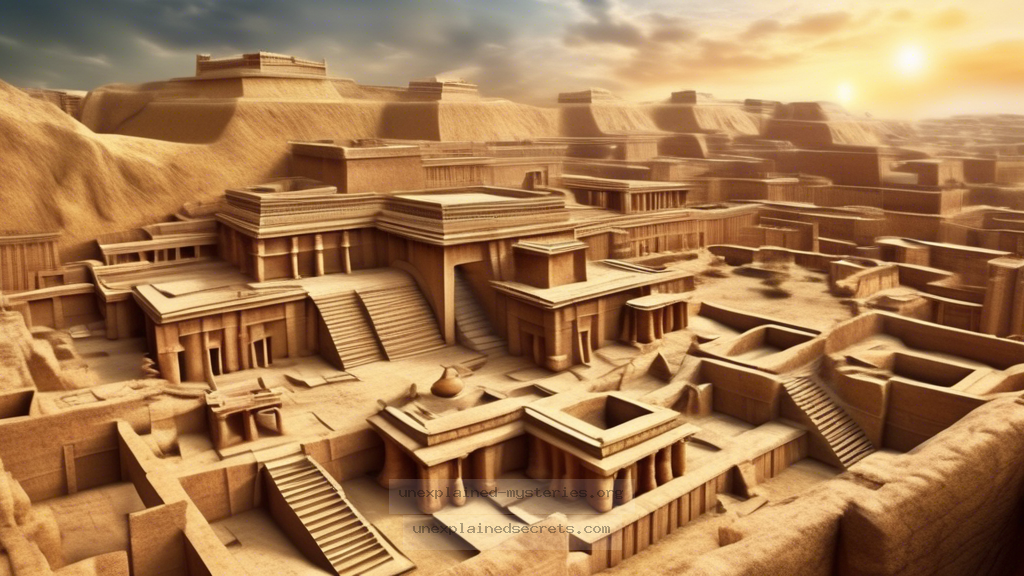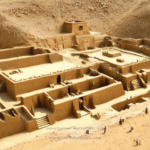What Happened to the Indus Valley Civilization: An Enigma of Ancient Urban Planning?
What Happened to the Indus Valley Civilization: An Enigma of Ancient Urban Planning?
The Indus Valley Civilization (IVC), flourishing around 2500 BCE in what is now Pakistan and northwest India, stands as one of the most remarkable mysteries of ancient civilizations. With its sophisticated urban planning, advanced drainage systems, and impressive architecture, the IVC was a marvel of its time. Yet, despite its achievements, the reasons behind its abrupt decline around 1900 BCE remain elusive. What happened to this advanced civilization? Understanding this mystery requires delving into a combination of historical context, archaeological evidence, and ongoing debate in the academic community.
Historical Context of the Indus Valley Civilization
The Indus Valley Civilization was one of the world’s earliest urban cultures, contemporary with ancient Egypt and Mesopotamia. It spanned over 1,250,000 km², encompassing major cities like Harappa and Mohenjo-Daro, which were known for their grid-like street layouts and sophisticated drainage systems. The IVC thrived due to its strategic location near the Indus River, which provided ample water supply for agriculture and trade.
Archaeological excavations have revealed a wealth of artifacts, including pottery, seals, and tools, showcasing the IVC’s advanced craftsmanship and trade networks. The civilization was remarkable for its lack of monumental architecture typically associated with contemporary societies, suggesting a different societal structure focused on urban planning and public health rather than on the glorification of rulers through grand monuments.
- Peak Period: 2600-1900 BCE
- Major Cities: Harappa, Mohenjo-Daro, Dholavira
- Urban Planning: Grid layouts and advanced drainage systems
Core Theories on the Decline of the Indus Valley Civilization
Multiple theories have been proposed to explain the decline of the Indus Valley Civilization, each attempting to piece together the puzzle of this ancient enigma. The most prevalent theories include environmental change, economic decline, invasion, and sociopolitical upheaval.
One leading theory suggests that climate change played a significant role in the decline. Evidence indicates that the region experienced a shift towards aridity around 2000 BCE, which would have severely affected agriculture and water supply. As the fertile lands dried up, it is likely that agricultural yields diminished, leading to food shortages and migration.
Another theory posits that economic decline due to trade disruptions may have contributed to the civilization’s downfall. The IVC was heavily reliant on trade with neighboring regions, and any disruption in trade routes could have caused economic hardship. Additionally, the decline in quality and quantity of craft goods during the later phases of the civilization supports this theory.
- Climate Change and Aridity
- Economic Decline and Trade Disruptions
- Invasion by Outside Forces
- Sociopolitical Upheaval
Environmental Changes: Evidence and Implications
The climatic shifts affecting the Indus Valley have been a focal point for researchers. Studies of sediment cores from the region suggest that the monsoon patterns changed significantly around the time of the civilization’s decline. As the monsoon weakened, it would have led to reduced river flow and agricultural challenges. Such changes would not only impact food production but also disrupt the entire socio-economic fabric of the civilization.
Additionally, archaeological findings of abandoned cities and signs of a migration pattern towards the eastern regions indicate that populations may have sought more hospitable environments to sustain their livelihoods. The implications of these findings suggest a complex interplay between environmental stress and human adaptation.
Evidence of Economic Decline
Archaeological excavations have uncovered a stark contrast in the artifacts from the peak and the decline of the Indus Valley Civilization. The quality of pottery and seals, which were once indicative of high craftsmanship, diminished significantly in later strata. This decline in material culture can be interpreted as a sign of economic downturn, reflecting reduced trade activity and possibly a shift in societal values.
Furthermore, the decline of major urban centers aligns with the reduced availability of resources, suggesting that the population may have been unable or unwilling to maintain the same level of urban sophistication. The emergence of smaller, less complex communities in the aftermath supports the hypothesis of a societal shift towards survival rather than urbanization.
- Decline in Quality of Pottery and Artifacts
- Abandonment of Major Urban Centers
- Shift Towards Smaller, Simpler Communities
Invasion Theories: What Do They Suggest?
Another narrative in the decline of the Indus Valley Civilization involves the potential for invasion or conflict. Some scholars argue that incursions by nomadic tribes from the north, such as the Indo-Aryans, could have contributed to the civilization’s collapse. However, this theory is contentious, as there is limited archaeological evidence of violent conflict or destruction in the major urban centers of the IVC.
It’s worth noting that while invasions are often cited as a cause of decline in many ancient civilizations, the evidence for such events in the context of the IVC is not as compelling. Instead, the lack of defensive structures and the relatively peaceful nature of the archaeological record suggest that if conflict occurred, it was not the primary driver of the civilization’s decline.
Sociopolitical Upheaval: A Changed Society?
As with any complex society, internal strife, social inequality, and leadership challenges could have played a role in the decline of the Indus Valley Civilization. The absence of monumental structures and royal tombs raises questions about the social hierarchy of the IVC, suggesting a more egalitarian society compared to its contemporaries. However, such structures may have emerged as resources became scarce, leading to increased competition, conflict, and social stratification.
Evidence of changing burial practices and a shift in settlement patterns may indicate that societal values evolved in response to the pressures of a changing environment and economy. This evolution could reflect a society grappling with its identity and structure as it faced unprecedented challenges.
- Potential for Social Inequality and Internal Conflict
- Changing Settlement Patterns Reflecting Societal Shifts
- Impact of Resource Scarcity on Social Structures
Common Misconceptions About the Indus Valley Civilization
Many misconceptions exist about the Indus Valley Civilization, particularly regarding its decline. One prevalent myth is that the civilization collapsed suddenly due to a catastrophic event, such as a natural disaster. While there were likely localized floods or earthquakes, the evidence suggests a more gradual decline influenced by multiple interrelated factors.
Another misconception is that the IVC was entirely wiped out. In reality, archaeological evidence indicates that some communities persisted for centuries after the decline of major urban centers, adapting to new realities and possibly integrating with emerging cultures in the region.
Best Practices for Investigating Lost Civilizations
For those keen on delving deeper into the mysteries of lost civilizations like the Indus Valley, a few best practices can enhance the investigation:
- Interdisciplinary Approaches: Combine archaeology with environmental science, anthropology, and history to gain a holistic understanding.
- Field Studies: Engage in fieldwork and excavations for firsthand experience and direct evidence collection.
- Stay Updated: Follow the latest research and publications in journals dedicated to archaeology and ancient history.
- Collaborate: Work with experts in various fields to foster a well-rounded perspective on complex issues.
Future Developments and Ongoing Research
Research on the Indus Valley Civilization continues to evolve, with new archaeological sites being uncovered and modern technologies, such as satellite imagery and ground-penetrating radar, providing fresh insights. Ongoing studies aim to further clarify the civilization’s societal structure, economic practices, and the factors leading to its decline.
Moreover, as climate change remains a pressing global issue, the lessons gleaned from the IVC’s experience with environmental stressors can provide valuable insights for contemporary society. Understanding how past civilizations adapted (or failed to adapt) to climate changes could inform our responses to today’s challenges.
Conclusion: The Enduring Mystery of the Indus Valley Civilization
The Indus Valley Civilization remains one of history’s great enigmas, with its decline posing questions that continue to intrigue scholars and enthusiasts alike. Through a combination of environmental changes, economic decline, sociopolitical upheaval, and possibly invasion, the downfall of this remarkable civilization is not easily attributed to a single cause. As research progresses, the collaborative efforts of archaeologists, historians, and environmental scientists will undoubtedly yield new insights into this ancient urban marvel.
Ultimately, the story of the Indus Valley Civilization serves as a poignant reminder of the fragility of human societies and the intricate web of factors that can lead to their rise and fall. 💡
Other Articles
Recent Posts
- What Happened to Flight MH370? The Conspiracy Theories That Still Haunt Us
- What Secrets Lurk Within the Walls of the Infamous Trans-Allegheny Lunatic Asylum?
- What Evidence Supports the Existence of Bigfoot in the Pacific Northwest?
- What Happened to the Indus Valley Civilization? Unraveling the Mysteries of Ancient Urban Life
- Can Telepathy Be Scientifically Proven Through Laboratory Evidence?







